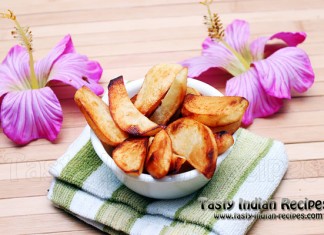Here are some simple, easy and possible Ways to Save Money on Food Shopping.
- Proper Planning: Before going to shop and before planning your weekly or monthly menu, always check the ads to see what is going on in sale and use coupons to take advantage of sales and money-saving coupons, You can also sign up online to receive coupons and email alerts from your favorite grocery shops.Katherine Tallmadge, RD, says, “Take inventory of what you have on hand so you don’t overbuy.Create a detailed shopping list based on your needs and weekly menu plan and take into account how you plan on using leftovers.”Eat a light snack before going for shopping and try to remain stick on your grocery list to help avoid impulse purchases or costly mistakes like falling for the displays at the end of the aisles.
- Healthy Food selection/choices:
Eating healthier foods can actually save you money. According to the study published in the Journal of the American Dietetic Association. The researchers found that when families went on weight loss diets, they not only lost weight but reduced their food budgets.The true savings came from reducing portion sizes and from buying fewer of the high-calorie foods that tend to increase the amount spent at the grocery store. People tend to spend a lot on extra food items that add more calories but little nutritional value, like sodas, bakery items and chips.You can get more for your money if you consider the nutritional value of food for the price. For example, sodas and flavored drinks deliver mostly empty calories and could easily be replaced with less expensive sparkling water with a splash of a 100% fruit juice like cranberry, orange or apple.”When my clients start eating more healthfully, their grocery bills plummet,” says Tallmadge, author of the book Diet Simple. “The ideal food is nutrient-dense not calorie-dense and the least expensive may be fresh, frozen, or canned,” she further added.Tallmadge has recommended that comparing food prices based on the number of servings you’ll get along with the food’s nutritional contribution. For example, a pound of peaches yields three to four servings. So when you divide the cost per pound, the cost is usually quite reasonable.
“Save money by passing on calorie-dense cakes and cookies. Instead, opt for seasonal fruit. Fruit is fat-free, high in nutrients and fiber, and a natural energizer.” Connie Diekman, RD, said.Do not forget to look for sales or coupons for light ice cream or non fat frozen yogurt to enjoy with your fruit and you have a delicious, fat-free and low-calorie dessert.
- Seasonal Food Shopping:
Check the food section in your newspaper to find the best buys for the week based on fresh produce in season. Food in the particular season is generally priced to sell. During the summer months, corn on the cob can cost as little as 10 cents an ear and during the other times of the year, it may cost 10 times as much. Do not forget to shop
your local farmers’ market for great deals on local produce, the prices will not definitely include shipping costs.Use of Sales, Discounts and Coupons.Sunday newspapers are generally full of coupons and sales circulars to get started, and it is always a good idea to stock up on staples when the stuff is on sale. One of the best technique is “Buy one, get one free”, which means you can get as much as you need at half of the price. Use your freezer to store sale items that can be used at a later date. - Food at Work:
Making and carrying the lunch with you is a great money-saver and an excellent use of leftovers for meals at work, school or wherever your destination.”Packing your lunch not only saves you money, but you can control all the ingredients so they are healthy and low in calories,” says Diekman, the nutrition director at Washington University. You may Pack a simple sandwich, salad, soup, wrap or even a hearty snack of cheese. Use freezer packs and containers to keep food at the proper temperature unless you have access to a refrigerator.
- Frozen, Canned or Dried Food Items:
While gathering the ingredients for a recipe, try using frozen, canned, or dried foods. They may be less expensive than the fresh, yet they are equally nutritious. Produce is typically frozen, canned, or dried at the peak of ripeness when nutrients are plentiful.Fish and poultry are often flash-frozen to minimize freezer damage and retain freshness. With frozen foods, you can use only the amount you need, reseal the package, and return it to the freezer. If it’s properly stored, there’s no waste. Canned foods are often sitting in a bath of juice, syrup.Dried fruits are concentrated in flavor and a great substitute for fresh fruit.Consider using powdered or evaporated versions of milk in soups, casseroles, mashed potatoes or desserts. Buy the form that gives you the best price for your needs along with the fresh dates of manufacturing.
- Use as per requirement without wasting:
Before entering into the grocery store, thick twice about your use of the food items and buy exactly what you want and you will use. The Environmental Protection Agency estimates that Americans generate roughly 30 million tons of food waste every year.Using leftover vegetables, poultry, or meat in soups, stews, salads, and casseroles minimizes the cost and demonstrates your creativity in your kitchen.For example, have a roasted chicken for dinner one night and use the leftovers for dinner on the next night. Make variations by topping with fruits, vegetables, and slices of leftover chicken pieces.You can add a loaf of whole-grain bread and presto. See you got the food full of nutritional values.You can also eat this leftover for the breakfast or even national brands, try buying store brands. “All food manufacturers follow the standards to provide safe food and beverage products of high quality,” says Robert Earl, director of nutrition policy for the Grocery Manufacturer Association.Many grocery companies buy national-brand products made to their specifications and put their own label on the products. Carefully read the ingredients list on the label to be sure you are getting the most for your money. Ingredients are generally listed in order by weight.
So when ever you are buying canned tomatoes, look for a product that lists tomatoes, not water, as the first ingredient. Also look for simpler versions of your favorite foods. For example, buy oatmeal or simple flaked or puffed cereals that contain fewer additives and are less expensive (and often healthier) than fancier cereals.
- Buy Prepackaged food only if required:
If you are offered a coupon of prepackaged food or got the salt on buying of prepackaged food that is sliced or washed, then only go for it. It is the part of your savings, it’s because the sliced, peeled, chopped and washed food items comes with a high price tag.People who are living alone may find that smaller sizes of perishable products or bags of prepared produce eliminate waste and fit their needs best, despite the extra cost. So, in this way also you can save your money along with boost nutrition by passing up the aisles with processed foods, cookies, snack foods and soda.
- Saving on Protein Foods:
Check out the possible ways to substitute the inexpensive vegetarian sources such as beans, eggs, tofu, and legumes for more expensive meat, fish or poultry. Eat vegetarian once a week or more to increase your consumption of healthy plant foods while saving money. Eggs are considered as an excellent and inexpensive source of protein that can be eaten for breakfast, lunch, or dinner.You could also try using a smaller portion of meat, fish, or poultry and extending the dish with whole grains, beans, eggs, or vegetables.When you do buy meat, choose smaller portions of lean cuts. For example, lean cuts of beef are those that includes the terms “loin” or “round.” (You can tenderize lean cuts of meat mechanically or by marinating them.)You can also buy a whole chicken and cut it up instead of paying the butcher to do it for you or buy the cheaper “family pack” and store it into airtight freezer bags.
- Buy in bulk and Cook In Bulk:
Joining a bulk shopping club like Sam’s, Costco or BJ’s can be cost-effective, if you are the frequent member of
the club. Bulk purchases can be a great way to save money as long as they get used. You might also look in your community for shopping cooperatives that sell food in bulk at a substantial savings.Similarly, Cooking in bulk can save both money and time, says Tallmadge. “Prepare food in bulk and freeze it in family sized portions, which saves time in the kitchen,” she has suggested. For example, making a big batch of tomato sauce will be less expensive and tasty as well than buying it. - Plant a Garden:
One of the best way is plant your own produce, that gives benefits along with the cost savings. There is nothing better than a summer-fresh tomatoes from the garden. Tomatoes even grow well in containers if you do not have place in your garden and some neighborhoods offer community gardening spaces.Start from small and see how easy it is to grow fresh herbs or a few simple vegetables. And if you invest a little time in freezing or canning your harvest, you can enjoy summer’s bounty all year-long.





